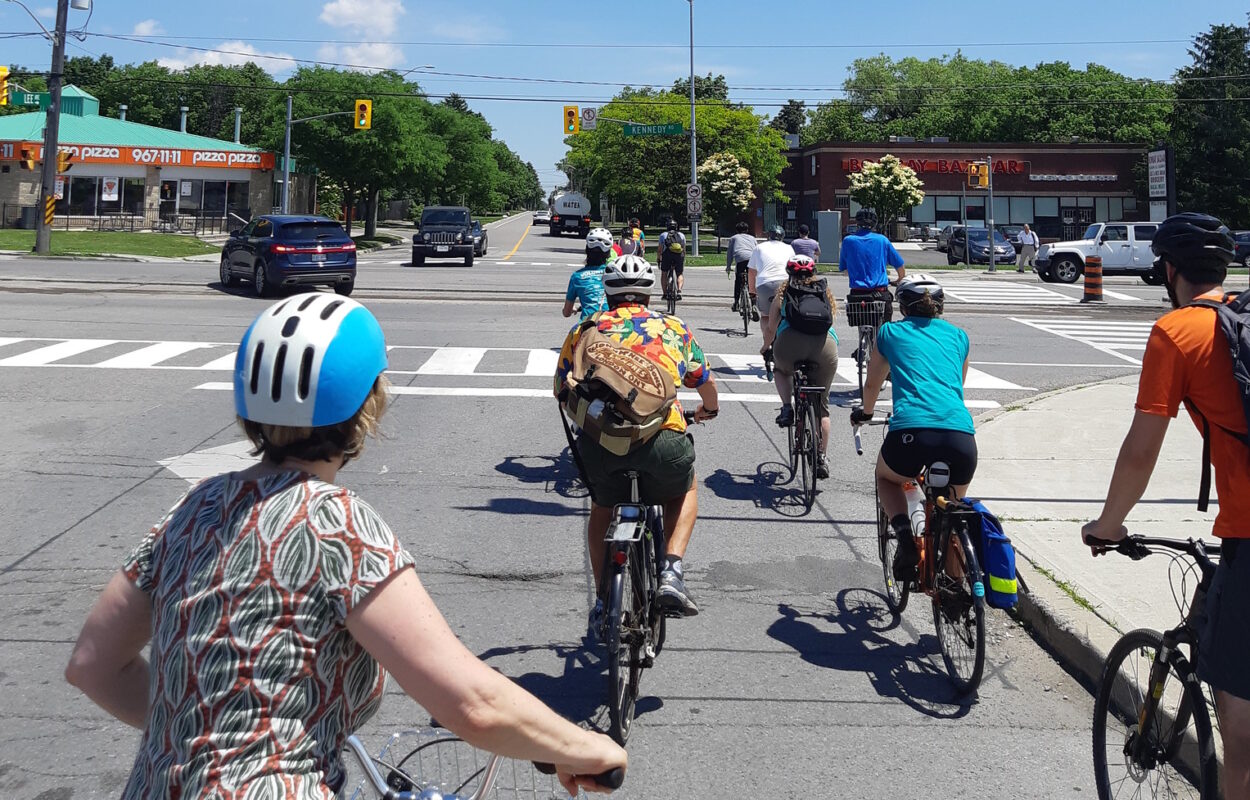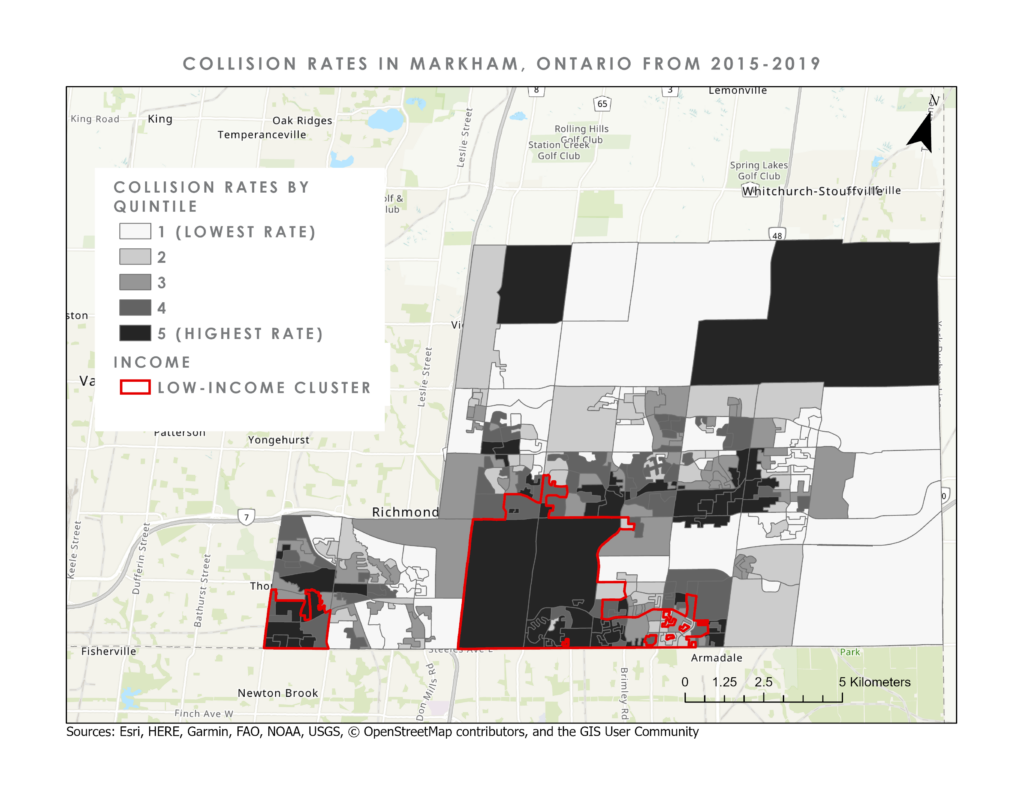
Neighbourhoods in Markham with more low-income residents have higher rates of pedestrian and cyclist collisions, finds a new research report by The Centre for Active Transportation (TCAT) at Clean Air Partnership.
While studies across Canada have found similar results, this finding about York Region’s largest municipality is surprising because the research also found that cycling, sidewalk and traffic calming infrastructure in wealthy and poor neighbourhoods across Markham is comparable.

In the analysis, the responses of York Region residents to a national health survey (2015-2016) were used to explore relationships between the built environment and chronic health outcomes. For the City of Markham specifically, the research focused on associations between neighbourhoods with groups that frequently face marginalization (older adults, visible minorities and low-income), collision rates (2015-2019), and access to active transportation infrastructure.
In recent years, Markham has implemented a city-wide traffic calming initiative that took advantage of wide, two-lane residential streets to install 2 metre urban road shoulders wherever the road width allowed. Though not signed as bike routes, the creation of narrower traffic lanes can slow high speed traffic and provide additional space for people on bikes. The City has also expanded trail networks, installed cycle tracks (bike lanes protected from vehicle traffic) in some areas, and required sidewalks on both sides of the street in new developments. The City has significant potential for active transportation and hosts Markham Cycles, TCAT’s community bike hub. Markham’s Active Transportation Master Plan is expected to be completed this Fall.
Markham’s city-wide approach appears to have helped them avoid the challenge that many other cities are now grappling with – that is, that cycling and traffic calming infrastructure is concentrated in wealthy, mostly white neighbourhoods. However, despite no discernible difference in access to infrastructure, the report found that Markham’s residents who are walking and cycling in lower-income neighbourhoods are more at risk.
One possible explanation is that, in a community where over 80% of trips are driven, low-income residents are relying more on walking, cycling and taking transit (which often involves walking to/from the transit stop), and thus have a higher rate of exposure. A recent report from York Region’s Community & Health Services Department, Strategies & Partnerships Branch points in this direction for recent immigrants in particular. With median incomes at $16,191, they are earning at half the rate of the Markham median ($32,242), and they are commuting to work more on foot, by bike or on public transit, and less by car.
Another possible explanation is that protected active transportation infrastructure, which provides adequate separation from motor vehicle traffic, may not be available in all neighbourhoods. Additional analysis could look more closely at the type of infrastructure being offered across the city to determine if low income neighbourhoods have equal access to high quality, protected infrastructure, such as cycle tracks, sidewalks on both sides and safe crossing points. This type of analysis should be integral to every municipality’s planning process to ensure that investments are addressing inequalities and creating equitable outcomes.
Additional Key Findings
- Across York Region, older adults, visible minorities and lower-income households live in neighbourhoods less suited to active transportation. These neighbourhoods have lower Active Living Environment scores, which measure street connectivity, population density and nearby destinations, but not walking or cycling infrastructure.
- In Markham specifically, neighbourhoods with more older adults had less cycling infrastructure but more traffic calming measures.
- Also in Markham, neighbourhoods with a high population of visible minorities have comparable access to cycling, walking and traffic calming infrastructure and do not experience higher rates of pedestrian or cyclist collisions, compared with predominantly white neighbourhoods. Markham is a very diverse city, with visible minorities making up the majority in over half its neighbourhoods.
- An initial scan of five recent active transportation plans found that while efforts are growing, much more can be done to explicitly identify and name local equity and health concerns and plan investment in a way that leads to more equitable outcomes.
Acknowledgements
The report was produced by Nahomi Amberber, University of Toronto Master of Public Health Candidate, during an internship at The Centre for Active Transportation, Clean Air Partnership. The City of Markham and York Region Public Health served as project partners, providing data and input towards the overall study design. The work was supported through a financial contribution to the Active Neighbourhoods Canada Network from the Public Health Agency of Canada. The views expressed herein do not necessarily represent the views of the Public Health Agency of Canada.
The full report can be found on our website: Active Transportation and Health Equity in Markham, Ontario
